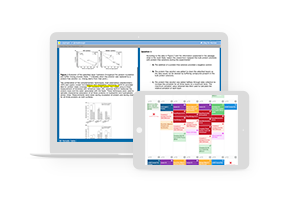Why are the doorknobs of most doors placed on the edge of the door, opposite the hinge where the door is attached to the doorframe?
A) Placing the doorknob as far as possible from the door’s center of gravity helps minimize the frictional force between the door and the doorframe during opening.
B) Maximizing the distance between the knob and the hinge allows the door to be opened with less force, because torque and distance of the lever arm are directly related.
C) Increasing the distance between the knob and the hinge reduces the acceleration produced when opening the door, which is advantageous for general safety concerns.
D) There is no physical explanation to justify this choice, and it is likely an historical artifact.
Explanation
Most doors open by rotating on a hinge. As such, they are opened through the application of torque. To make it as easy as possible to open the door, the knobs are placed as far from the hinge as is feasible. This maximizes the lever arm, reducing the amount of force needed to open the door.
A: Frictional force between the door and the doorframe should already be near zero for a properly hung door. Ff depends on the normal force, and since a door doesn’t rest on the doorframe itself, there shouldn’t be any frictional force.
C: A larger lever arm increases torque. This doesn’t directly increase or decrease acceleration, as that depends on how massive the door is and how much force is applied.
D: Incorrect, as explained in choice (B).
Want more practice?
[ninja_forms id=27]
Search the Blog

Free Consultation
Interested in our Online MCAT Course, One-on-One MCAT Tutoring or Med admissions packages? Set up a free consultation with one of our experienced Senior Student Advisors.
Schedule NowPopular Posts
-
MCAT Blog What's on the MCAT?
-
MCAT Blog How to Review MCAT Full Lengths

Free MCAT Practice Account
Need great MCAT practice?Get the most representative MCAT practice possible when you sign up for our free MCAT Account, which includes a half-length diagnostic exam and one of our full-length MCAT practice exams.
Learn More







